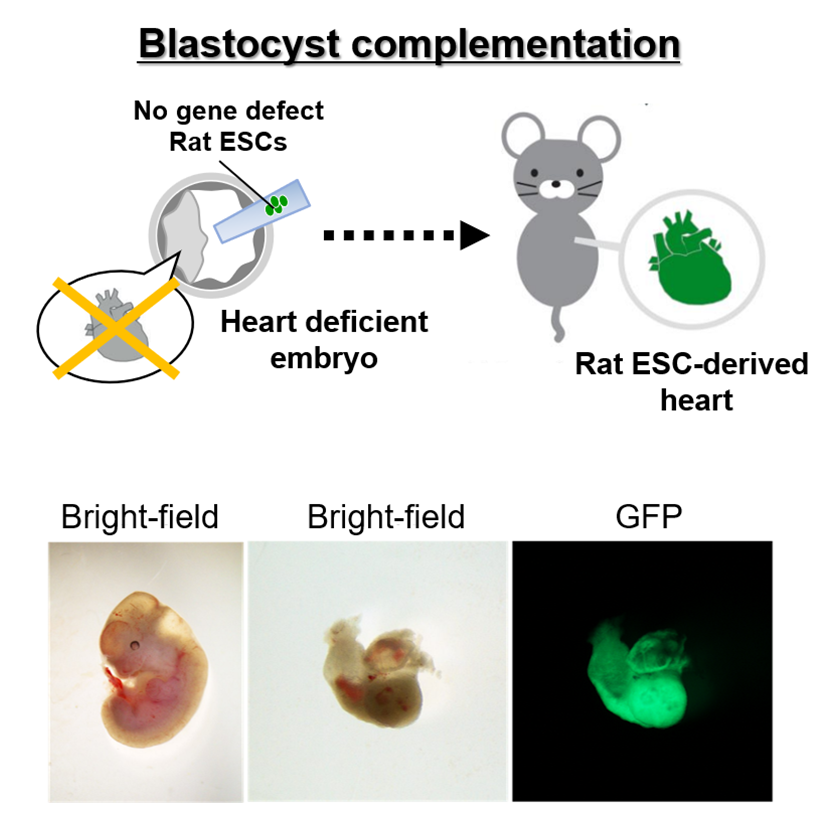2025.06.02
Generation of pluripotent stem cell-derived hearts in interspecies chimeric animals
Organ developmental engineering ・ Associate Professor ・ Ayako Isotani
Blastocyst complementation is a technique in which pluripotent stem cells are injected into embryos of animals with organ-deficient genotypes. This approach enables the generation of organs derived from the pluripotent stem cells. It has attracted attention as a potential solution to two major challenges in organ transplantation: the shortage of donor organs and immune rejection (1–4). We successfully generated rat hearts within interspecies chimeric animals by injecting rat embryonic stem cells into embryos of a mouse model genetically lacking the heart. While mice with a heart-deficient genotype typically die by embryonic day 8.5, the interspecies chimeras with rat-derived hearts survived until embryonic day 12.5 but died thereafter. These findings suggest that although rat hearts can be generated within interspecies chimeras, they may fail to fulfill essential functions required for survival beyond a certain stage of fetal development (5). Challenges remain in generating transplantable hearts from xenogeneic pluripotent stem cells using blastocyst complementation. Overcoming these barriers could ultimately lead to the production of donor hearts in the future.
Reference
- Kobayashi T et al., (2010) Sep 3;142(5):787-99.
- Isotani A et al., (2011) Apr;16(4):397-405.
- Wu J et al., (2017) Jan 26;168(3):473-486.e15.
- Yamaguchi T et al., (2017) Feb 9;542(7640):191-196.
- Yuri S et al., (2024) Nov 18;27(12):111414.
- Kitajima S et al., (2000) Aug;127(15):3215-26.
- Yuri Set al., (2024) Jan 1;151(1):dev202081.
- Yamaguchi T et al., (2018) Oct 16;8(1):15289.
Ayako Isotani NAIST Edge BIO, e0031. (2025).

